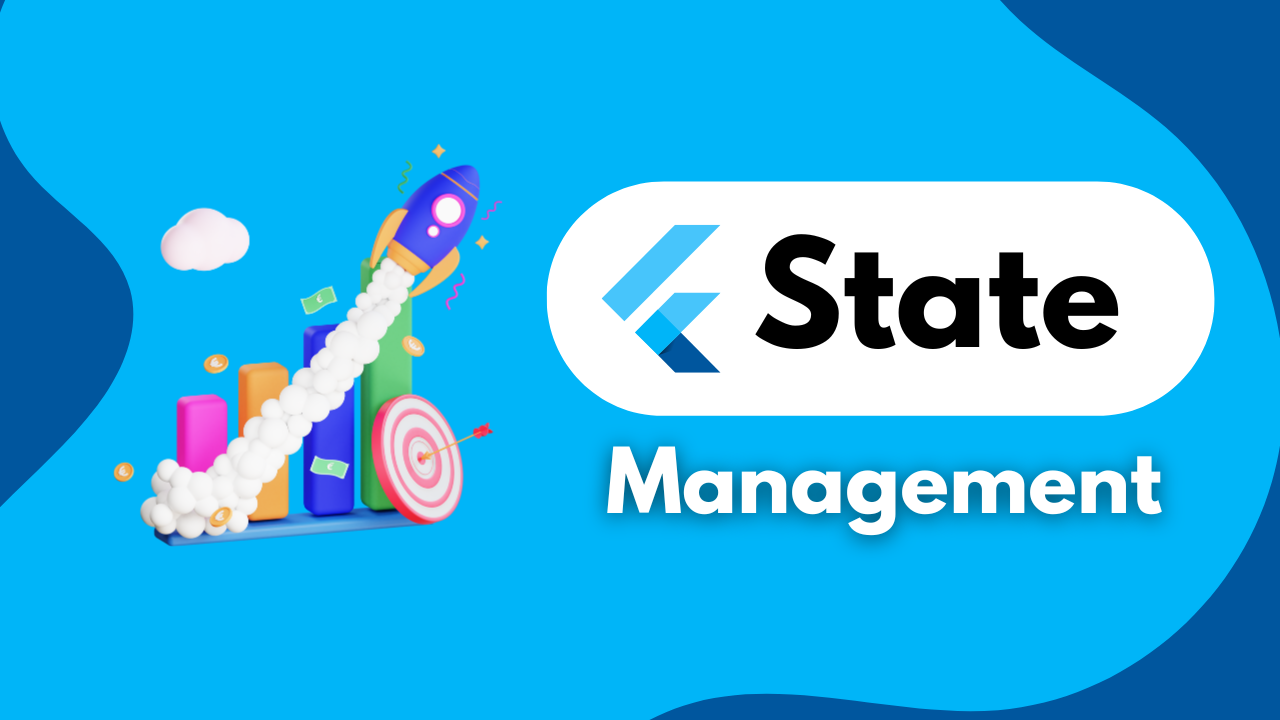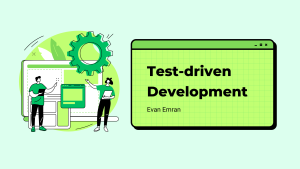Introduction:
Flutter, the popular cross-platform framework for mobile app development, has gained immense popularity for its rich UI capabilities and fast development cycles. As apps become more complex and feature-rich, efficient state management becomes crucial to ensure a smooth user experience. In this blog post, we will delve into the world of Flutter state management, exploring its importance, different approaches, and best practices to help you build robust and scalable applications.
Understanding State in Flutter:
State refers to the data that represents the current state of a Flutter application. It includes information such as user input, network responses, or any dynamic changes affecting the UI. Managing state effectively is essential to keep the UI in sync with the underlying data.
Why State Management Matters:
Efficient state management is crucial for several reasons:
- Performance: Flutter apps rely on the framework’s reactive programming model, which means the UI rebuilds whenever there is a change in state. Unoptimized state management can result in unnecessary rebuilds and poor performance.
- Code Organization: As apps grow, managing state across multiple widgets can become challenging. Proper state management techniques enable better code organization and maintainability, making it easier to understand, debug, and extend the application.
- Scalability: A well-architected state management solution ensures scalability, allowing your app to handle increased complexity, feature additions, and future updates without sacrificing performance or stability.
Approaches to Flutter State Management:
Flutter offers several state management approaches, each suited for different scenarios. Let’s explore some popular ones:
- setState:
The simplest form of state management in Flutter is using thesetStatemethod. It belongs to theStateclass and allows you to update the state of a widget and trigger a UI rebuild. While it is suitable for small applications or simple UI updates, it can become cumbersome to manage state across multiple widgets.
Example Code
import 'package:flutter/material.dart';
class MyHomePage extends StatefulWidget {
@override
_MyHomePageState createState() => _MyHomePageState();
}
class _MyHomePageState extends State<MyHomePage> {
int _counter = 0;
void _incrementCounter() {
setState(() {
_counter++;
});
}
@override
Widget build(BuildContext context) {
return Scaffold(
appBar: AppBar(
title: Text('State Management'),
),
body: Center(
child: Column(
mainAxisAlignment: MainAxisAlignment.center,
children: <Widget>[
Text(
'Counter:',
),
Text(
'$_counter',
style: Theme.of(context).textTheme.headline4,
),
],
),
),
floatingActionButton: FloatingActionButton(
onPressed: _incrementCounter,
tooltip: 'Increment',
child: Icon(Icons.add),
),
);
}
}
- InheritedWidget:
InheritedWidget is a built-in Flutter widget that allows you to propagate data down the widget tree efficiently. It provides an inherited mechanism, making it easier to share state across multiple widgets without passing the data explicitly. However, managing complex state and deep nesting can lead to boilerplate code and reduced code clarity.
Example Code
import 'package:flutter/material.dart';
class Counter extends InheritedWidget {
final int count;
final Function() increment;
Counter({
Key? key,
required Widget child,
required this.count,
required this.increment,
}) : super(key: key, child: child);
static Counter? of(BuildContext context) {
return context.dependOnInheritedWidgetOfExactType<Counter>();
}
@override
bool updateShouldNotify(covariant Counter oldWidget) {
return count != oldWidget.count;
}
}
class CounterProvider extends StatefulWidget {
final Widget child;
CounterProvider({required this.child});
@override
_CounterProviderState createState() => _CounterProviderState();
}
class _CounterProviderState extends State<CounterProvider> {
int _count = 0;
void _increment() {
setState(() {
_count++;
});
}
@override
Widget build(BuildContext context) {
return Counter(
count: _count,
increment: _increment,
child: widget.child,
);
}
}
class MyHomePage extends StatelessWidget {
@override
Widget build(BuildContext context) {
final counter = Counter.of(context);
return Scaffold(
appBar: AppBar(
title: Text('State Management'),
),
body: Center(
child: Column(
mainAxisAlignment: MainAxisAlignment.center,
children: <Widget>[
Text(
'Counter: ${counter?.count ?? 0}',
style: Theme.of(context).textTheme.headline4,
),
],
),
),
floatingActionButton: FloatingActionButton(
onPressed: counter?.increment,
tooltip: 'Increment',
child: Icon(Icons.add),
),
);
}
}
- Provider:
Provider is a state management library widely used in the Flutter community. It leverages InheritedWidget and implements a simple and scalable approach to manage state. Provider decouples the UI from the business logic, allowing easy state access and updates across the application. It promotes the use of ChangeNotifier or Stream as the state-holding classes and offers seamless integration with other Flutter libraries.
Example Code
import 'package:flutter/material.dart';
import 'package:provider/provider.dart';
class CounterProvider with ChangeNotifier {
int _counter = 0;
int get counter => _counter;
void incrementCounter() {
_counter++;
notifyListeners();
}
}
class MyHomePage extends StatelessWidget {
@override
Widget build(BuildContext context) {
return ChangeNotifierProvider(
create: (context) => CounterProvider(),
child: Scaffold(
appBar: AppBar(
title: Text('State Management'),
),
body: Center(
child: Column(
mainAxisAlignment: MainAxisAlignment.center,
children: <Widget>[
Consumer<CounterProvider>(
builder: (context, counterProvider, child) {
return Text(
'Counter: ${counterProvider.counter}',
style: Theme.of(context).textTheme.headline4,
);
},
),
],
),
),
floatingActionButton: FloatingActionButton(
onPressed: () {
Provider.of<CounterProvider>(context, listen: false)
.incrementCounter();
},
tooltip: 'Increment',
child: Icon(Icons.add),
),
),
);
}
}
- BLoC (Business Logic Component) pattern:
The BLoC pattern separates business logic from the UI by introducing a layer of streams. It involves the use of Streams and Sinks to handle input and output respectively. BLoC provides a clear separation of concerns, making the app architecture more testable and maintainable. Libraries like FlutterBloc and RxDart simplify the implementation of the BLoC pattern.
Example Code
import 'dart:async';
import 'package:flutter/material.dart';
import 'package:flutter_bloc/flutter_bloc.dart';
// CounterEvent represents different events that can occur
abstract class CounterEvent {}
class IncrementEvent extends CounterEvent {}
class CounterBloc extends Bloc<CounterEvent, int> {
CounterBloc() : super(0);
@override
Stream<int> mapEventToState(CounterEvent event) async* {
if (event is IncrementEvent) {
yield state + 1;
}
}
}
class MyHomePage extends StatelessWidget {
@override
Widget build(BuildContext context) {
return Scaffold(
appBar: AppBar(
title: Text('State Management'),
),
body: BlocBuilder<CounterBloc, int>(
builder: (context, count) {
return Center(
child: Column(
mainAxisAlignment: MainAxisAlignment.center,
children: <Widget>[
Text(
'Counter: $count',
style: Theme.of(context).textTheme.headline4,
),
],
),
);
},
),
floatingActionButton: FloatingActionButton(
onPressed: () {
context.read<CounterBloc>().add(IncrementEvent());
},
tooltip: 'Increment',
child: Icon(Icons.add),
),
);
}
}
Best Practices for Flutter State Management:
To ensure efficient and scalable state management in your Flutter applications, consider the following best practices:
- Choose the Right Approach: Select a state management approach based on the complexity and requirements of your application. Consider factors like performance, scalability, code organization, and maintainability.
- Separate UI and Business Logic: Decouple UI code from the business logic to enhance testability, reusability, and maintainability. This separation also allows for easier debugging and refactoring.
- Use Immutable Data: Prefer immutable data structures to manage state. Immutable objects simplify tracking changes and enable easy comparison for efficient state updates.
- Minimize Rebuilds: Utilize mechanisms like
shouldRebuildorEquatableto prevent unnecessary widget rebuilds when the state hasn’t actually changed. This optimization can significantly improve performance. - Consider Reactive Programming: Leverage the power of reactive programming paradigms like Streams, Observables, or Reactive Extensions (Rx) to handle asynchronous state updates and react to changes effectively.
Conclusion:
Efficient state management is essential for building scalable and maintainable Flutter applications. By choosing the right state management approach and following best practices, you can streamline development, enhance performance, and deliver an exceptional user experience. Whether you opt for the simplicity of setState, the flexibility of Provider, or the structured approach of the BLoC pattern, understanding state management is a crucial skill for Flutter developers. So, go ahead, explore the various techniques, and elevate your Flutter app development to new heights.




